#henri riviere
Photo

Henri Riviere, from Thirty Six Views of the Eiffel Tower 1902
325 notes
·
View notes
Text


Henri Rivière, La Pleine Lune, 1902
Henri Rivière, The Last Ray (Le Dernier Rayon), 1902
(Lithographs printed in color on smooth wove paper)
#henri riviere#french artist#french art#lithography#lithograph#landscapes#landscape art#the moon#moon art#moonlight#full moon#modern art#art history#aesthetictumblr#tumblraesthetic#tumblrpic#tumblrpictures#tumblr art#aesthetic#tumblrstyle#beauty
64 notes
·
View notes
Photo

Henri Rivière (1864-1951) - Le coucher de soleil
Lithograph on paper in 12 colours. Produced in 1898.
21.7 x 32.7 inches, 55 x 83 cm. Estimate: €600-800.
Sold Thierry-Lannon, Brest, France, 23 July 2022 for €2100 + B.P.
Plate 11 of 16 from the series Aspects de la Nature.
100 notes
·
View notes
Text

The Wandering Jew: The Forest, Henri Rivière, 1864–1951
2 notes
·
View notes
Text

Henri Riviere, l'Enterrement aux parapluie, 1885
1 note
·
View note
Text
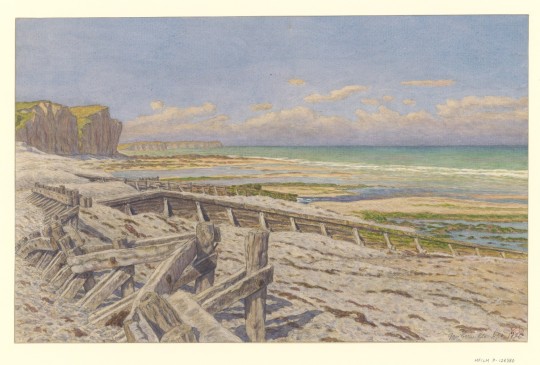
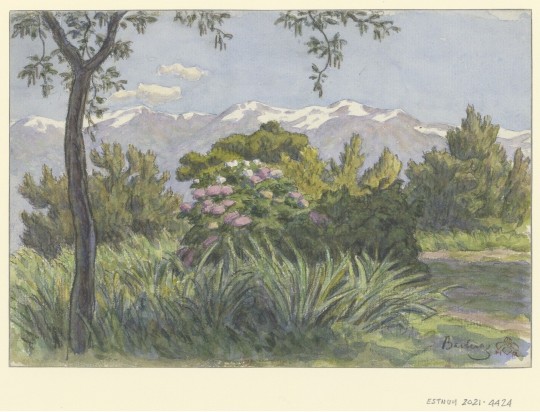

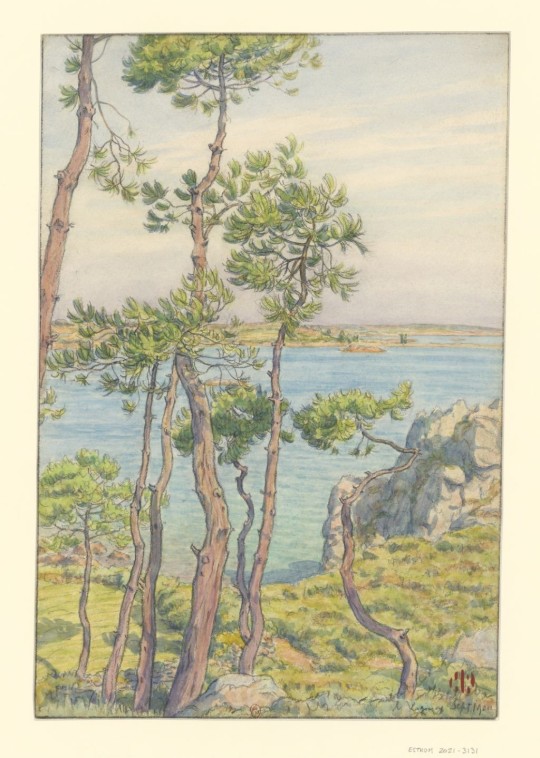
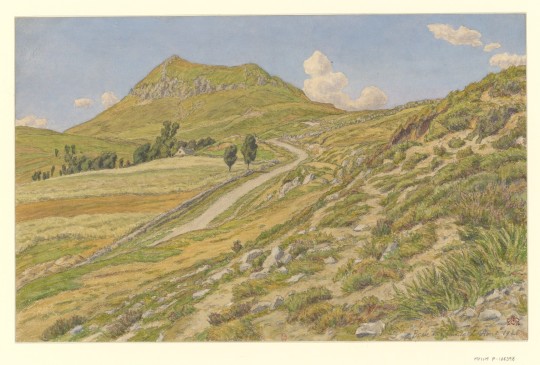

Some watercolor landscapes by the very prolific French artist Henri Rivière (1864-1951)!
I normally find landscapes quite boring, but the way he uses color makes me feel things inside.
#landscapes#henri rivière#watercolor illustration#brittany#french art#pont-aven school#vintage inspo#henri rivière was also the dude who came up with the shadow play at the chat noir café#quite cool#henri riviere#favoritos
1 note
·
View note
Text
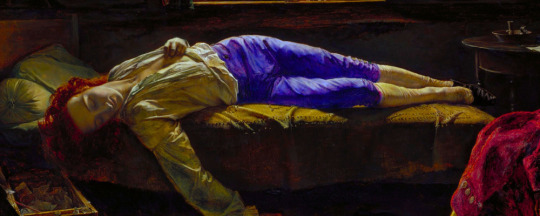





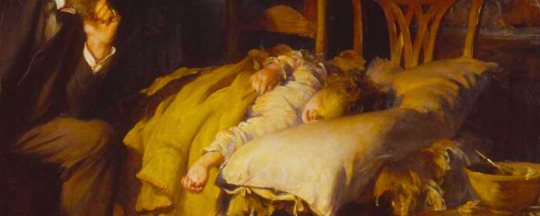
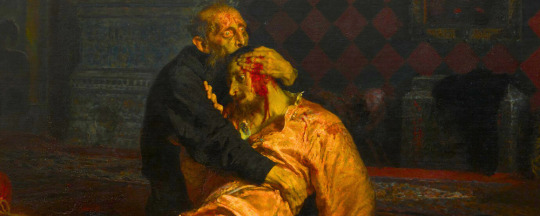
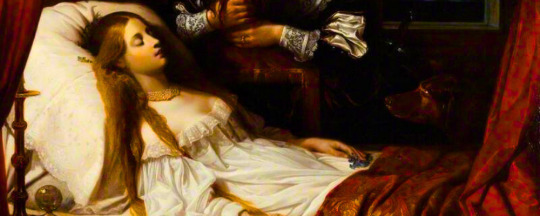



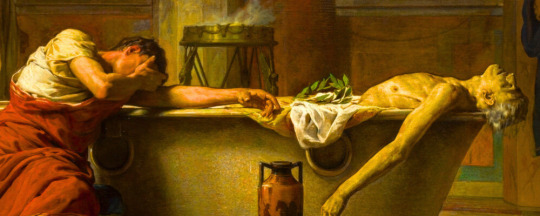
death in art
the death of chatteron by henry wallis (1856)
ophelia by john everett millais (1851-52)
the execution of marshal ney by jean-leon gerome (1868)
requiescat by briton riviere (1888)
yellow fever in buenos aires by juan manuel blanes
elaine by edward rosenthal (1874)
the doctor by luke fildes (1891)
ivan the terrible and his son by Ilya repin (1885)
the bride of death by thomas barker (1839)
lord byron on his death-bed by joseph denis odevaere (1826)
recognition: north and south by constant mayer (1865)
the lament for icarus by herbert james draper (1898)
death of seneca by dominguez sanchez manuel (1871)
#art#art history#henry wallis#sir john everett millais#jean leon gerome#briton riviere#juan manuel blanes#edward rosenthal#luke fides#ilya repin#thomas barker#joseph denis odevaere#constant mayer#herbert james draper#dominguez sanchez manuel#death in art
573 notes
·
View notes
Text

I wait every year for summer, and it is usually good, but it is never as good as that summer I am always waiting for.
Henri Lebasque, Village au bord de la riviere | Martha Gellhorn
#summer#web weaving#first week of summer vacation#I am really vibing with these rn they are The Mood Of The Hour#impressionism#art#Henri Lebasque#Martha Gellhorn#quotes#fuming bc this painting is in a private collection and I will never get to see it :/
41 notes
·
View notes
Text
Here Are 17 Uncommon Curiosities Reportedly Found In The Ohio River
The Queen City, as Henry Wadsworth Longfellow famously wrote, sits “in her garlands dressed, on the banks of the Beautiful River.” Once claimed by the French and named by them exactly that: La Belle Riviere, the Ohio has been the soul and foundation of our city ever since the first houses went up, but our Beautiful River has also proved to be a weird and moody companion, coughing up a bizarre miscellany from time to time.
Alligators
In 1879, Dr. A. Jackson Howe procured a live, three-foot long alligator for display at the museum of the Cincinnati Society of Natural History. The reptile had been captured on the Covington shore, while several others were spotted frolicking in the Ohio River among some empty coal barges. Three years later, John Thornton found an alligator sleeping beneath the floorboards of his Newport icehouse. Charles Pitts of Covington lassoed a three-and-a-half-foot alligator from the Ohio River at the foot of Covington’s Main Street in 1870.
Bodies, Lots Of Bodies
Almost from the time Cincinnati was first settled bodies have been recovered from the Ohio River including suicides, victims of foul play and accidental drownings. Among the earliest casualties was Francis Kennedy, who operated the first ferry between Cincinnati and Northern Kentucky and who drowned while hauling beef cattle to Fort Washington. Over the years, the old newspapers printed hundreds of inquest reports, often directed toward ascertaining the identities of bodies found overnight.
Catfish Of Unusual Size
The Cincinnati Commercial Tribune of 3 February 1849 reports that Frederick Diserens, proprietor of the William Tell restaurant, and Colonel Josiah J. Stratton of the Fire Department, had shipped a “mammoth cat fish” to the Exchange Hotel in Philadelphia. The leviathan, caught in the Ohio River at Cincinnati, measured five feet, ten inches in length and tipped the scales at 158 pounds. Prior to its shipment east, the beast hung outside Diserens’ establishment on the south side of what is now Government Square. In 2009, two fishermen landed a blue catfish measuring four feet, six inches long and weighing 96 pounds within view of downtown Cincinnati.
Chemical “Slug”
The Ohio River, lined with heavily fertilized farmland and a multitude of manufacturing plants, is regularly listed as among the most polluted streams in America. Residents of a certain age will recall the great carbon tetrachloride “slug” of 1977. When a tank full of toxic “carbon tet” ruptured at the FMC Corporation facility in February of that year, it released 5000 to 6000 pounds into the Ohio River as a 50- to 60-mile “slug” of highly polluted liquid. Water purification systems up and down the river shut off intake valves until the “slug” passed.
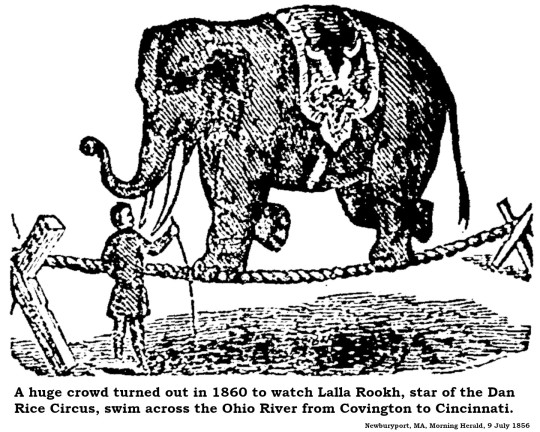
Elephant Bathing
All of Cincinnati – and Covington, too – turned out on the morning of 9 August 1860 to watch an elephant swim across the Ohio River. The elephant was Lalla Rookh, star of the Dan Rice Circus. Lalla Rookh had been, for the past decade, a highlight of Dan Rice's big-top extravaganzas. Billed as the “Pachyderm Princess,” she was famous for her tightrope act and she also danced, rang bells and fired a pistol. She was a huge draw and, according to the Cincinnati Enquirer, brought out a good crowd for her river bath, estimated between 15,000 and 20,000
Ghosts
No one ever solved the 1890 murder of Billy Fee, who was knifed and shot on the banks of the Ohio River near Lawrenceburg. Almost a year later a young man traveling by boat up the river past the murder scene cried out that he could see shadows on the darkened waters vividly recreating the murder scene. For years, residents of Lawrenceburg venturing near the river at night reported visions of the dreadful crime, accompanied by the sounds of shrieks and gunshots.
Giant Snakes
On 11 August 1849, a Clermont County “man of respectability” named John Wait swore to an affidavit in which he claimed to have seen a snake more than 30 feet in length on the banks of Hartman’s mill pond. A posse was assembled and searched all over for the beast with no results, even after draining the mill pond. Sightings, however, continued for the next decade. In 1858, the Cincinnati Commercial Tribune reported that the dam at Hartman’s mill had been badly damaged by a flood and the snake was assumed to have escaped toward the Ohio River. According to a 1940 article in the Cincinnati Post, the Cincinnati Zoo offered to help citizens near Gallipolis locate a snake estimated at 35 feet in length. Coincidence?
Green Clawed Beast
It was a sultry afternoon on 14 August 1955 when Naomi Johnson and some friends headed to the Ohio River at Evansville for a refreshing dip. While swimming just 15 feet offshore, something swam up behind Mrs. Johnson and grabbed her leg. She felt claws scratch her leg as the thing pulled her under the water. She began kicking her assailant and was pulled under a second time before her friends lifted her out of the river. Her left leg was extensively lacerated and bruised, with one mark distinctly hand-shaped. Mrs. Johnson claimed to have seen a UFO just before she was attacked, and there were several UFO sightings in the Evansville area around the time of the incident, leading her to believe an extraterrestrial origin for her attacker.
Kentucky Border
For most of our region’s history, the entire Ohio River belonged exclusively to Kentucky. That all changed on 21 January 1980, when the United States Supreme Court fixed the border between Ohio and Kentucky at the low-water mark of the river in 1792. With two centuries of dam construction and other navigational improvements, the Ohio River is significantly deeper and wider than it was in the 1790s. The border is now, in some cases, hundreds of feet off the Ohio shore.
Madonna’s Yacht
Rusting away in an Ohio River tributary just 25 miles downriver from Cincinnati is a 186-foot yacht originally known as the Celt but probably most famous as the USS Sachem among a variety of names acquired over its 120-year history. Thomas Edison used it for anti-submarine research. It ran out of New York as a recreational fishing vessel and served as a coastal patrol ship during World War II. After the war it hauled tourists around Manhattan. Robert Miller of Finneytown bought the yacht for $7500 in the 1980s and rented it out to Madonna, who filmed part of her “Papa Don’t Preach” video onboard. Miller hauled it upriver to its current resting place shortly after sailing a boatload of friends around the rededication of the Statue of Liberty in 1986.
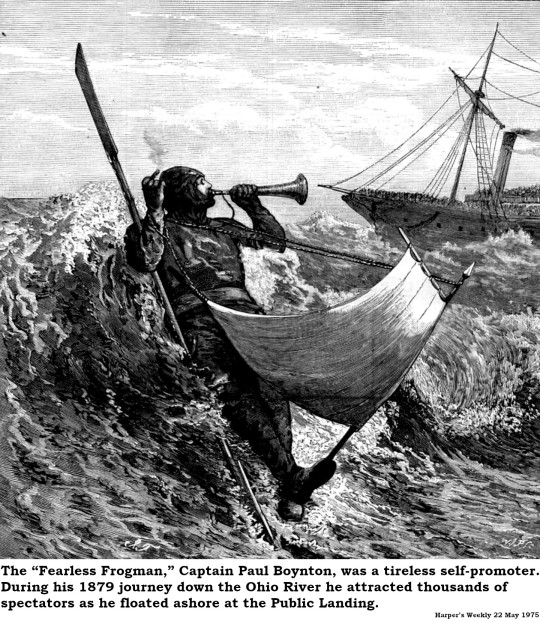
Man Afloat
On 11 March 1879, a crowd of fifteen thousand swarmed the riverfront to catch a glimpse of the “Fearless Frogman,” Captain Paul Boynton, as he arrived in Cincinnati while floating from Pittsburgh to Cairo in a buoyant rubber suit. Outfitted with sails and oars, Boynton’s “peculiar life-saving dress” allowed him to maintain speeds of five or six miles per hour on his downriver odyssey. That night, he attended a performance at the Grand Opera House on Vine Street and, being recognized, was called to the stage and compelled to give a speech.
Mud Mermaids
The Cincinnati Enquirer of 6 September 1894 reported two “nondescript creatures, horrible in appearance and strange in habits” at a sand bar in the Ohio River near Vevay, Indiana. The creatures appeared to be carnivorous, dining on fish and mussels plucked from the river. They were described as being yellowish in color, about five feet long, with webbed and clawed hands and feet. Their hairless heads had sharply pointed ears standing straight up. In the years since, the Vevay beings have been dubbed “Mud Mermaids.”
Octoman
Police dispatchers along both sides of the Ohio River were swamped with frantic calls from late January to early February 1959 as dozens of residents and travelers reported strange creatures emerging from the depths. Sightings were recorded from New Richmond to the Licking River bridge. One witness compared the critter to an octopus while others said it looked like an immense human, leading to the nickname Octoman. Panic spread, with one 11-year-old boy calling the Cincinnati Post to confirm his teacher’s story that green men were clambering out of the river in platoons of twelve. To add to the mystery, all the streetlights along Kellogg Avenue from Lunken Airport to Coney Island extinguished as the first reports came in. After a week, sightings abated and Octoman seemingly disappeared.
Petroglyphs
Just as the Ohio River slips across the state line from Pennsylvania, at the junction with Little Beaver Creek at East Liverpool, it covers a vast array of submerged designs carved into the rock. First recognized by French explorers in 1755, the display has been largely immersed in a much deeper river, only occasionally emerging into visibility in times of extreme drought. Hundreds of these Native American carvings were found for about 10 miles along the Ohio River from Midland, Pennsylvania through Wellsville, Ohio. The origin or date of the petroglyphs remains unknown and will likely never be determined.
Sea Lion
In May 1962 several people reported a strange beast frolicking in the Ohio River near the Fernbank locks. The animal was not large; maybe three feet in length, but it was unlike anything naturally associated with the wildlife of the area. An expedition organized by the Cincinnati Zoo discovered that the mysterious visitor was a sea lion named “Playful George” that had escaped from a menagerie in Huntington, West Virginia and made its way nearly 200 miles downriver to the Markland Dam. George was captured and quarantined at the Zoo before returning home.
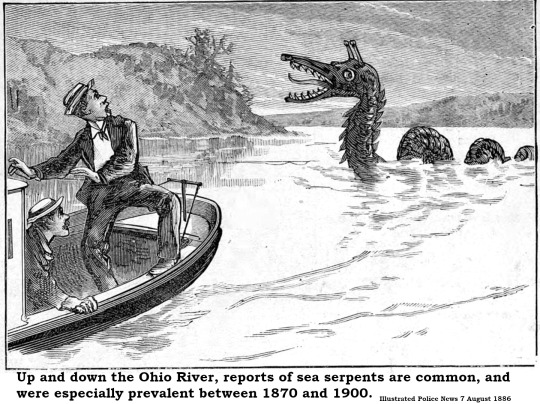
Sea Serpents
In the dim, pre-dawn light of Friday, 11 January 1878, Ben Karrick was driving his horse-drawn delivery wagon over the Roebling Suspension Bridge when he saw a most unusual sight in the Ohio River below – a sea serpent. He told the Cincinnati Gazette that the creature’s serpentine head protruded from the water some twelve or fifteen feet and it lashed the water into foam with its tail. Karrick told the newspaper that the beast made a noise similar to the deep lowing of a cow, interspersed with a loud hissing noise. A day previously, John Davidson, master of the Silver Moon steamboat, saw a nearly identical monster while docked at Vevay, Indiana. In July 1893, pleasure boaters near Blennerhassett Island saw “a monstrous submarine animal or serpent, with an immense head and staring, bulbous eyes” gliding alongside their boat. The witnesses estimated the critter at more than 10 feet in length.
Underwater Pedestrian
Newspapers around the nation carried the news in July 1878 that Captain John T. Guire, identified as “the celebrated submarine diver,” had entered into a wager that he would walk from Cincinnati to Cairo on the bottom of the Ohio River. Guire’s previous exploits in the Mississippi River at Saint Louis were cited as proof of his skill and determination. Although it was noted that Guire engaged in practice strolls near Cincinnati, it does not appear that the 500-mile underwater hike to Cairo ever materialized.
21 notes
·
View notes
Photo

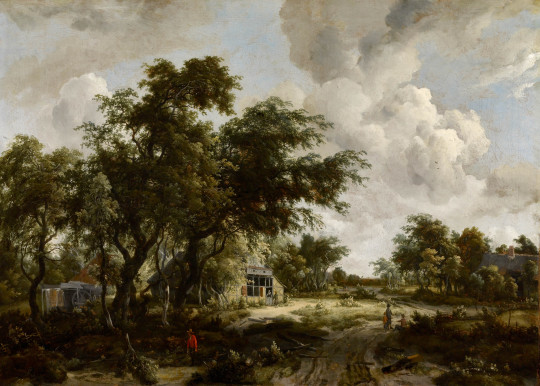
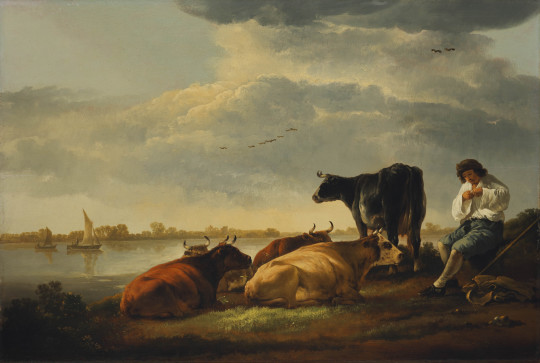
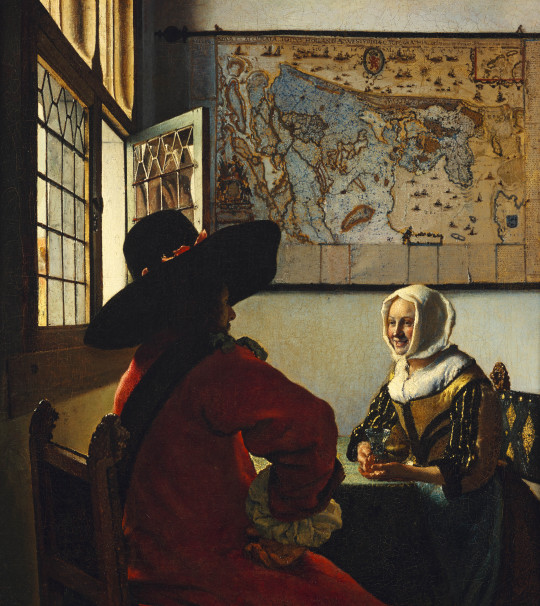

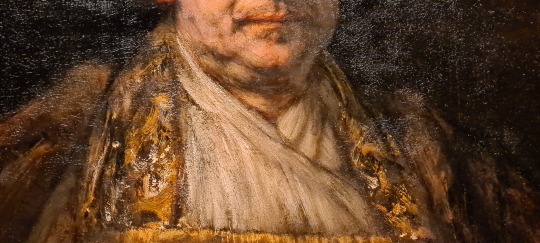
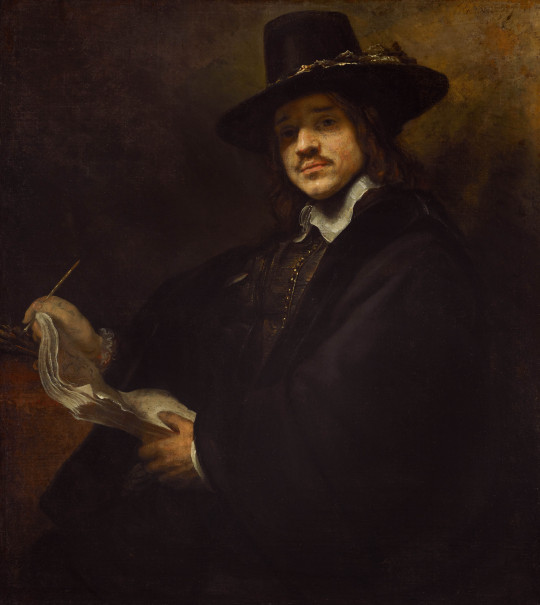



Wat? Landschap met een voetbrug door Jacob van Ruisdael (1652), Landschap met watermolen van Meindert Hobbema (ca. 1665), Rivierlandschap met herder en koeien door Aelbert Cuyp (Ca. 1650-1660), Soldaat en lachende vrouw door Johannes Vermeer (ca. 1657), Zelfportret (1658) (met detail) en Portret van een jonge kunstenaar (ca. 1650-1660) door Rembrandt van Rijn en Portret van een man (met details) door Frans Hals (ca. 1660)
Waar? Tentoonstelling Manhattan Masters – Hollandse schilderijen uit The Frick Collection in het Mauritshuis, ’s-Gravenhage
Wanneer? 24 november 2022
Aan de rand van Central Park in New York staat de villa waarin The Frick Collection is gevestigd. Het museum huisvest de verzameling van ondernemer en kunstverzamelaar Henry Clay Frick met wat daar later aan is toegevoegd. Nu dit museum wordt gerenoveerd, leent het tien topstukken van Nederlandse meesters uit aan het Mauritshuis in Den Haag.
Een tentoonstelling van slechts tien werken klinkt niet veelbelovend, maar kwantiteit is niet alles en in dit geval geldt het Bauhaus-motto ‘Less is more’ meer dan ooit. De kwaliteit van de tentoongestelde werken is fantastisch en het is heerlijk om je aandacht slechts over een beperkt aantal doeken te hoeven verdelen.
Jacob van Ruisdael is natuurlijk vooral beroemd vanwege zijn luchten. Nu moet ik bekennen dat ik van de meeste werken van deze schilder een beetje somber wordt. Maar niet van het werk dat hier hangt: Landschap met een voetbrug. Het werk vertoont veel diepte en de kleuren zijn zo intens alsof het werk gisteren is geschilderd. Het werk is ongetwijfeld recent gerestaureerd of ten minste schoongemaakt. We zien een heuvelachtig landschap. Links zit een heer te paard, terwijl een tweede paard door een knecht bij het leidsel wordt vastgehouden. De berijder van dit tweede dier is afgestapt en sluipt met het geweer in de aanslag de helling op naar de loopbrug. Zijn doelwit is waarschijnlijk het paar eenden dat op de rivier dobbert. Aan het water zit een hengelaar. Hij heeft zijn hoofd gedraaid naar de paarden. Werd hij bij het hengelen gestoord of is het nieuwsgierigheid die zijn aandacht afleidt van waar hij mee bezig is? In de verte op een heuvel zien we een kerk en een molen, wat erop duidt dat zich daar een dorp bevindt. Natuurlijk is de wolkenlucht fraai geschilderd, zoals je van Ruisdael mag verwachten, maar dat geldt zeker ook voor de bomen. Vooral de oude boom links, die zijn wortels in de, zo te zien rotsachtige, bodem heeft begraven is geweldig weergegeven. Het licht speelt door het gebladerte en zorgt voor een prachtige gloed. Als ik na de tentoonstelling thuis de catalogus opensla, zie ik op de reproductie weinig terug van wat dit doek in realiteit zo onweerstaanbaar maakt. Dat toont maar weer eens aan dat niets op kan tegen ‘het echte werk’.
Een ander landschap is van de hand van Ruisdaels leerling Meindert Hobbema, een schilder die ik beter ken van de Amsterdamse kade dan van zijn schilderijen. Ook dit werk is van een verbluffende kwaliteit. Net als het schilderij van Ruisdael lijkt het zo uit het restauratieatelier afkomstig. Het shirt van de man links vooraan is helderrood en ook het geel van het huisje is sprankelend. Aan de deur van het huisje is een man, leunend op een stok, in gesprek met iemand die binnen staat. Is de man buiten een bedelaar? Dat lijkt zeker het geval te zijn bij de man die rechts van het pad zit. Hij strekt zijn hand uit naar een man en een jongen die tegenover hem staan. Net als bij het landschap van Ruisdael zijn de bomen ook in dit schilderij heel mooi weergegeven.
Van Aelbert Cuyp zien we een rivierlandschap. Een herder frummelt wat aan zijn hemd, terwijl vier van zijn koeien rustig aan de oever van een rivier liggen. Een vijfde koe staat en lijkt te kijken naar de zeilboten op het water. Zowel het tafereel als het gouden licht zijn typerend voor de Dordtse schilder. Een half jaar geleden bezocht ik de tentoonstelling In het licht van Cuyp in het Dordrechts museum. Deze expositie ging uitgebreid in op het werk van deze schilder en de invloed die hij had op andere, met name Engelse, kunstenaars.
Het eerste dat mijn aandacht trekt op Johannes Vermeers Soldaat en lachende vrouw is de landkaart van Nederland. Naar onze begrippen hangt de kaart op zijn kant, het westen naar boven. Ik zie dat mijn geboorte-eiland Walcheren hier nog echt een eiland is. Een ander interessant detail is het glas-in-loodraam. Dit zorgt voor een warme gloed, met name op het gezicht en de hoofddoek van de vrouw. Dit werk is een goede smaakmaker voor de grote Vermeer-tentoonstelling die volgend jaar in het Rijksmuseum zal plaatsvinden. In 1996 bezocht ik hier in het Mauritshuis de laatste grote Vermeer-expositie. Een ware blockbuster!
Het absolute pièce de résistance van deze tentoonstelling is het zelfportret van Rembrandt uit 1658. Tijdens zijn leven schilderde de kunstenaar zo’n tachtig zelfportretten, waarvan dit het grootste is. Rembrandt vereeuwigde zichzelf levensgroot in zestiende-eeuwse kledij, zittend in een leunstoel. De verfstreken zijn gedurfd, hier en daar haast wild, op het doek gezet. Kijk naar de band van de paltrok om Rembrandts nek! Maar het meest indrukwekkend aan dit portret is het doorleefde gezicht met de ogen die mij als beschouwer strak aankijken. Rembrandt voelt in dit schilderij niet als een kunstenaar uit een ver verleden, maar veeleer als een oudere vriend of een wijze oom.
Aan de wand links van dit magistrale werk hangt een werk van een navolger van Rembrandt. Wat een tegenstelling tussen de twee schilderijen! Hier zien we een jonge kunstenaar vol zelfvertrouwen. Zijn blik is zelfverzekerd. Het leven ligt nog grotendeels voor hem. Rembrandt heeft net een faillissement achter de rug, waarbij hij zijn huis (nu het Rembrandthuis) moest verkopen. Het leven heeft zijn sporen nagelaten in het gelaat van de kunstenaar.
Schreef ik dat Rembrandts verfstreken wild waren? Kijk dan ook eens naar het Portret van een man van Frans Hals. Hier is haast sprake van impressionisme avant la lettre. Het witte hemd is met woeste streken neergezet en de handschoenen, die de man in zijn hand houdt, zijn feitelijk niet meer dan een paar vegen verf.
10 notes
·
View notes
Text
Auto Hoogenboom in het Verzamelgebouw Zuid, 23 oktober 1960.
Uit het Vrije Volk van 14 oktober 1960:
'Een risico? Ja, dat was het. Maar we geloofden in dit gebouw en we hebben er met plezier aan gewerkt. Bij alle spanningen die het gaf, hebben we er onze vreugde aan beleefd.'
Het klink als een getuigenis, deze uitspraak van de heer. C. van Gelderen, directeur van de N.V. Bouw- en ï Exploitatiemaatschappij v/h C. Gestel en zo is het kennelijk ook bedoeld.
Het getuigt van de zekerheid met het Verzamelgebouw Rotterdam-Zuid een goed stuk werk te hebben geleverd. En van het vertrouwen dat het risico niet ten onrechte genomen is, dat dit enorme bouwwerk óp een centraal punt van Rotterdam- Zuid een goede toekomst tegemoet gaat.
De heer Van Gelderen sprak deze woorden aan de vooravond van de officiële opening, die zaterdagmiddag door burgemeester mr. G. E. van Walsurn verricht gaat worden. Er wordt, zoals altijd vlak voor de opening van elk gebouw, nog hard gewerkt, maar de heer Van Gelderen, die met zijn staf een deel van de tweede verdieping betrokken heeft met een ruim uitzicht op het nog wat onoverzichtelijke Zuidplein, mag het karwei nu toch wel als voltooid beschouwen.
Met dit Verzamelgebouw is een gedachte verwezenlijkt, die al vóór 1955 bij Stadsontwikkeling leefde: op de zuidelijke oever van de rivier een centraal gebouw te scheppen voor de vestiging van allerlei bedrijven. Bij de opzet kon zowel het Groothandelsgebouw als de Industrieflat aan de Goudsesingel als voorbeeld dienen en het is geen toeval, dat architect H. A. Maaskant, die in het ontwerpen van die twee complexen een belangrijk aandeel heeft gehad, de opdracht kreeg ook aan het nieuwe Verzamelgebouw vorm te geven.
De acht bouwlagen omvatten 19 winkels met kelder, 95 bedrijfsruimten van verschillende afmetingen en (op de bovenste etage) 15 dienstwoningen met drie tot vijf kamers. Voor 55% van deze totale ruimte is thans een bezetting gevonden.
De fotograaf is Francois Henry van Dijk en de foto komt uit het Stadsarchief Rotterdam. De informatie komt uit het Vrije Volk van 14 oktober 1960.
Bericht van 2021

0 notes
Text
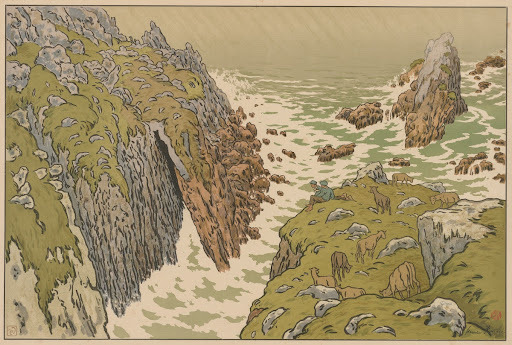
Henri Rivière
Aspects of Nature: The Cliff
1897
#henri riviere#french artist#french art#print making#prints#printing#lithography#lithograph#art on tumblr#modern art#art history#aesthetictumblr#tumblraesthetic#tumblrpic#tumblrpictures#tumblr art#aesthetic#tumblrstyle#beauty#seascape#landscape#landscape art#artists on tumblr
24 notes
·
View notes
Text
CONCOURS PHOTO « La nature ne pense qu’à ça ! » : annonce des résultats !
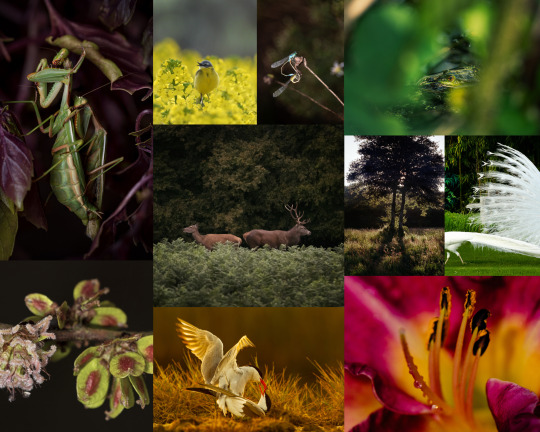
Les délibérations du jury de professionnels du concours photo 2023-2024 ont eu lieu en ce début de printemps. Le jury était constitué de :
Guillaume RIVIERE, photographe indépendant.
Philippe LEBEAUX, photographe, vidéaste, spécialiste de la biodiversité des sols.
Hugo DELCOURT, enseignant à l’ETPA.
Myrtille VISSCHER, artiste photographe.
Yutharie GAL ONG, artiste photographe.
Lilie PINOT, photographe plasticienne.
Le thème de cette édition, « La nature ne pense qu’à ça ! », a inspiré de nombreux photographes, petits et grands, des quatre coins de la France (et de la Guyane !) mais aussi du Canada, de l’Italie, de la Belgique et de la Suisse... Les 447 photographies reçues cette année ont donné pas mal de fil à retordre au jury mais le verdict est tombé après maintes discussions. Notons qu’un mineur fait partie des lauréats, un bravo tout particulier à lui !
Voici donc les 3 premiers prix :
Le 1er prix est attribué à : Jeu de Lucile ROBLET (Toulouse)
Le 2ème prix est attribué à : Aimer à en perdre la tête de Julien ROUARD (Aniane)
Le 3ème prix est attribué à : Exhibitionnisme d'Axelle DUDOUET (Canada)
Les 7 autres photos lauréates sont :
Fleurs et fruits d'orme champêtre : Jean-François CART (Nogent-sur-Seine)
Les arbres amoureux : Nathanaël FOURNIER (Aubusson)
A la recherche du soleil de mon cœur : Robin LEZER, mineur (Verrières-le-buisson)
Vaincu ou vainqueur : Jean-Luc MERCIER (Le Boulou)
Fenêtre sur chambre : François MILLE (Saint-Étienne-au-Mont)
Amour en équilibre : Françoise SOULES (Bayonne)
Sternes pierregarins : Guy VAN LANGENHOVE (Septeul)
Les 10 photographies lauréates feront l'objet d'une exposition au sein même du Muséum d’histoire naturelle de Toulouse, sur l’espace d’exposition extérieur situé le long de la passerelle du jardin botanique Henri Gaussen (35, allées Jules Guesde 31000 Toulouse), du 4 juin au 9 septembre 2024.
Un grand merci à tous les participants et toutes nos félicitations aux gagnants !
1er prix : Jeu de Lucile ROBLET

2ème prix : Aimer à en perdre la tête de Julien ROUARD

3ème prix : Exhibitionnisme de Axelle DUDOUET

Fleurs et fruits d'orme champêtre : Jean-François CART

Les arbres amoureux : Nathanaël FOURNIER
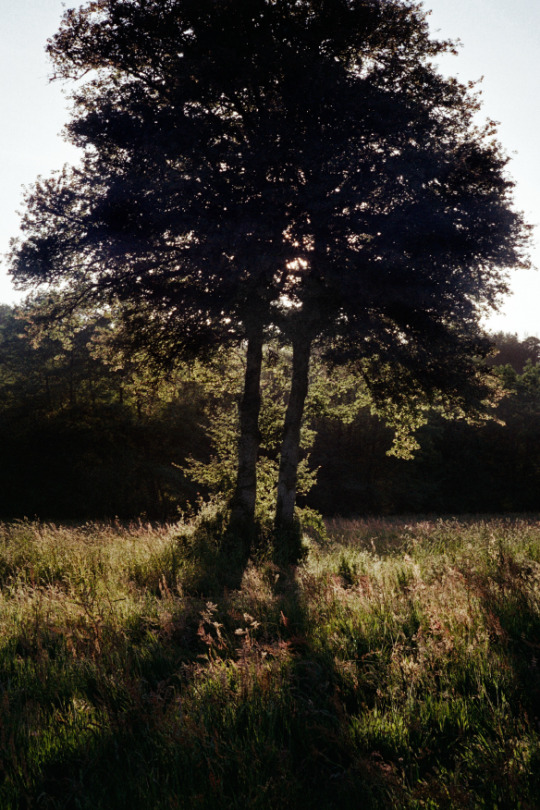
A la recherche du soleil de mon cœur : Robin LEZER

Vaincu ou vainqueur : Jean-Luc MERCIER

Fenêtre sur chambre : François MILLE
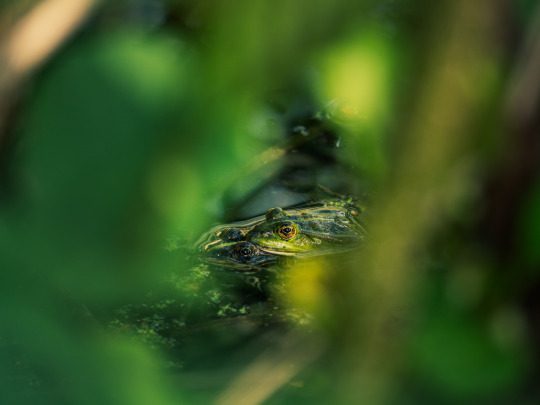
Amour en équilibre : Françoise SOULES

Sternes pierregarins : Guy VAN LANGENHOVE
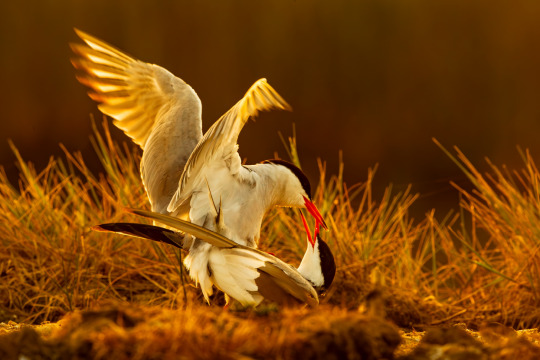
0 notes
Text
1/30/2024
The Great Wave: Perspectives, Tits, and 2024
It's the end of the beginning. January's newborn blood runs off the year as we look at February. I'm long overdue to update this blog and here we are: an update.
Things are going pretty well, all things considered. I'm writing. My habit of writing in series and along thematic lines continues. When I visited my sister in Seattle I found myself in the Seattle Asian Art Museum. Amongst the traditional art from Korea, Japan, India, and elsewhere, there was a visiting exhibit about the influence of Japanese woodblock prints on French artist Henri Riviere. Posters for Chat Noir hung alongside the iconic work of the artist Hokusai. The pieces, in conversation with one another, swirled around like shadows on the wall until I was pulled forcefully toward the exhibit's focal point.
Hokusai's most iconic work is The Great Wave from his series 36 Views of Mount Fuji. This breathtaking image with its meticulous composition and simple shapes had such a profound impact on Henri Riviere that the French artist created his own tools to approximate their technique. In homage to Hokusai's Mt Fuji works, Riviere made his own 36 Views of the Eiffel Tower.
Staring at the work of both artists in the museum, I was swallowed up completely. Here was the singular and inimitable Eiffel Tower broken into a kaleidoscope of 36 images across time and perspective to reflect the myriad ways these fixtures of our world change us with their changes.
Riviere’s art shows the infancy of the tower, its wobbling coltish legs years before they stood in the center of Paris. It shows the construction workers resting in the crosshatched iron of its adolescent belly. The work makes me see what was a garish tourist trap as something deeper. As the end result of a collaborative and demanding journey of work. It shows the context. It shows the respect Riviere not only had for the Eiffel tower itself, but also the work of his art’s inspiration. To see all the pieces of the puzzle together resulted in pure awe as I stood in the room.
This is my favorite thing about art and my largest gripe with most art museums: the white walls. I hate the vacuum of museums. Stripping pieces of their context save for a plain text plaque. Personally, I love to be choked with context. I like to be surrounded and steeped in background. To see Riviere amongst his influences, to see a full picture distilled into something so small and simple as a paperback book of prints. Art lives in its moment, over and over again to inform how we see it now. I like eating the whole meal, to better burn what I can into something beautiful and transformative.
Inspired, I sat down in one of the museum's chairs and wrote a poem about my breasts. That one poem has since evolved into my latest exploration. Hokusai honored the landscape of Japan by treating it like a system of stars and planets swirling around the mist-capped mountain. Riviere honored France's history and breadth by showing an Eiffel Tower under construction and framed in the distance. I decided to honor my transitioning body by writing about my tits.
To me, tits are a fascinating concept. All my life I ran terrified from the concept of "man boobs"and the distinctly toxically masculine way fat is treated on the body of men. Tits are something the human body is set against in relief. Their absence, their presence, their connotations. Tits are for mothers. They’re for infants. They’re for feeding and eating. As I fitfully work to grow my own breasts into the shape of my dreams, I meet a woman who feels most at home without them.
Her megawatt confidence at her smooth, nipple-less chest fits perfectly with the bursting joy of my budding one. We fit, inspirations to each other. Again, even by their defining absence, tits have some strange and almost supernatural capacity to evoke strong emotion one way or the other.
To distill my personal journey, once again I turn to the writer Dodie Bellamy (who I should really send an edible arrangement or something at this point considering the impact she's had on me) and her book The Mina Harker Letters like I always do:
"my breasts are no longer breasts but titties just the thought of keyboarding the word titties excites me."
They do excite me. In selfies, in the mouths of lovers, in my hands, in their aching weight on my chest. I can’t seem to shut up about them. So, if I can produce 36 poems of a satisfactory quality about my tits, then I'll have, if you'll pardon the pun, a body of work. Maybe a chapbook. Maybe something longer. Who knows?
On the subject of my body, another development is that I've been exercising. The same visit I met Hokusai and Riviere, my brother-in-law gave me his old VR headset. Since then I've been doing rhythm and boxing workouts at least three times a week. I won't allow this to become a praise song for good ol' fashioned Sweat and #Grindset propaganda but the central truth is I'm happy. It's about discovering the body, the same work that I do with my writing. Being trans means acknowledging the will of the flesh, the pull towards change. The body I want has tits, works out, and loves women. That's all I've been able to work out lately but that's been enough for me.
It’s another country in this shifting continent of my flesh. I notice new changes every day, just like with my hormones. I suddenly crave movement. I suddenly experience joy with sweat and strength. I even drink fucking water. I had a smoothie for lunch. Just like with my tits, there’s a past version of myself who would bet a bullet on never turning into something that has a smoothie for lunch.
Another year of change seems to be rumbling in the clouds at the horizon.
Last year I rekindled my love of poetry, started writing and performing regularly again, and found success, but, more importantly, found happiness. This year promises to be no different and I feel nothing but excitement.
Here's to more writing. More working out. More discovery of what this body wants.
What it can let go of.
What it can hold.
Yours with an open mouth,
-B
0 notes
Text

Brume sur l'étang de Faux by Henri Manguy https://www.artlimited.net/9216/art/photographie-brume-sur-l-etang-de-faux-numerique-nature-paysage-aquatique-lac-riviere/en/11719452
0 notes
